Health check
1. Check injection system fuses (FUEL INJ). Replace defective fuses.
Models up to 9/89, issue.
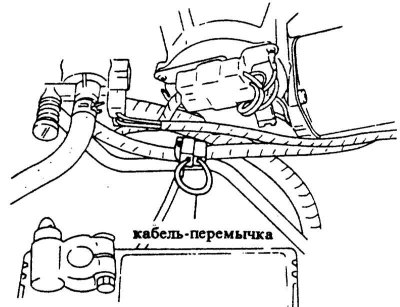
1. Connect the fuel pump test connector terminals with a cable. The cable remains connected during the test.
Models since 10/89
1. Connect the F/P and GND terminals with a cable. The cable remains connected during the test.
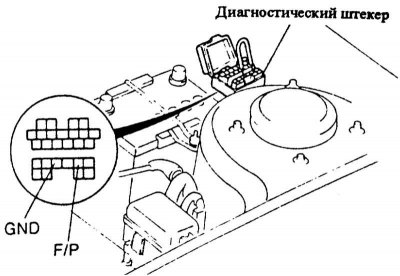
2. Turn on the ignition, do not start the engine.
3. Remove the gas tank cap and check for noise from the fuel pump. If no noise is heard from operation, check the wires according to the diagram for a break. If the wires are good, but you still can’t hear the noise from the work, then you should check the fuel pump relay.
Checking the fuel pump relay
1. Remove the rear seat, see chapter Body, car painting, car care.
2. Turn on the ignition.
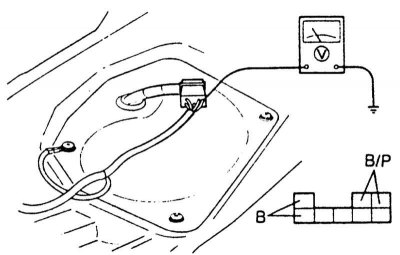
3. Use a voltmeter to measure the voltage between the B/P terminal (until 9/89 issue. terminal GR) and mass. It should be 12 V.
4. Turn off the ignition.
5. If the voltage is not correct, unscrew the side trim of the center console in the passenger footwell. The fuel pump relay is located next to the control unit.
6. Turn on the ignition.
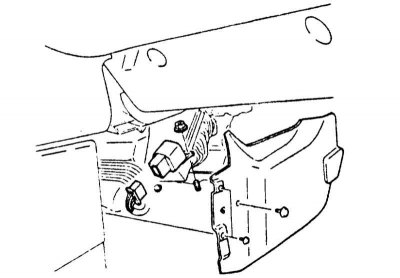
7. Check that the relay switches audibly. If the relay does not switch, check the relay resistance.
8. Disconnect the plug on the relay.
9. Measure the resistance between the terminals with an ohmmeter.
| Terminals | Ohm resistance | |
| until 9/89 issue. | since 10/89 issue. | |
| STA-E1 | 15 — 30 | 21 — 43 |
| B - Fc | 80 — 150 | 109 — 206 |
| B - Fp | ||
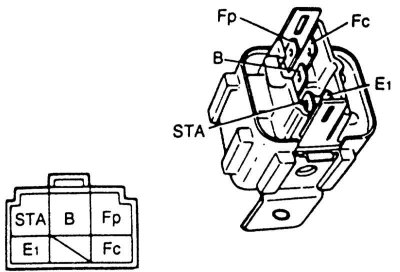
10. If one or more values do not meet the requirements, the relay should be replaced. If the relay is OK, check the fuel pressure.
Fuel pressure check
Verification conditions: Battery is fully charged (12 Volt), fuel filter in perfect condition.
1. Equalize the fuel pressure.
2. Disconnect the fuel line between the fuel filter and the distribution line on the filter, after loosening the clamp.
Attention! Place a rag around the fuel line as fuel may come out.
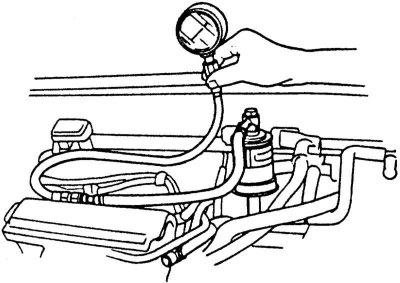
3. Connect a pressure gauge with a fuel-resistant auxiliary hose to the fuel filter.
4. Turn on the ignition, do not start the engine.
5. Measure fuel pressure. Required value: 4.4-5.8 bar.
6. If the value does not meet the requirements, the fuel hoses and connections should be checked for damage, tightness and blockage. If the hoses are OK, replace the fuel pump.
7. Turn off the ignition.
8. Disconnect the cable from the diagnostic socket.
9. Remove the auxiliary hose and pressure gauge and connect the fuel hose, securing it with a clamp.
10. Start the engine and check the fuel system for leaks.
